Traveling for food? You’re just like me. Get excited for your next culinary adventure!
Your destination is Hokkaido, where vegetables have their own festivals, hybrid fruits are highly prized, fresh seafood abounds, and dairy is at its most decadent.
Get started on planning your fun, food-filled vacation in Japan’s northernmost prefecture with some of my favorites!
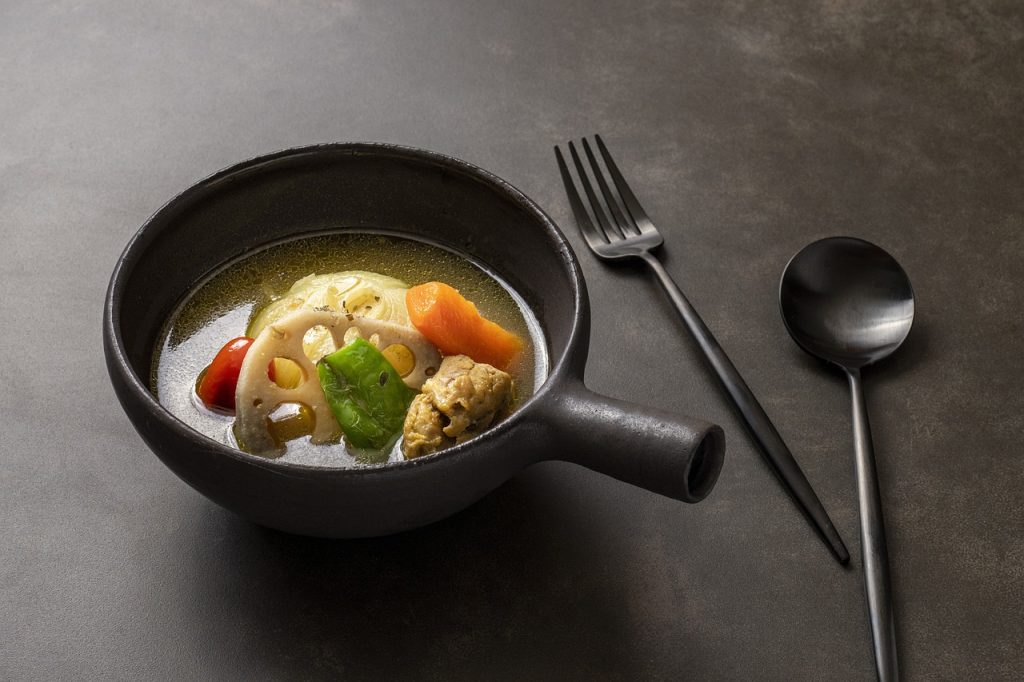
Soup Curry
What can be more comforting than a soup, curry… or both?
Born inside a coffee shop in 1970, this Sapporo-famous dish is a comforting bowl of rich, curry-flavored broth topped with renkon (lotus root), eggplant, carrots, and, sometimes, an option of meat.
Served with a plate of fragrant steamed rice, this humble dish is the antidote to cold winter nights in Hokkaido. But like any comfort food, it tastes delish all year round.
At the long-established restaurant Ajanta Indian Curry, (also referred to by locals as Ajanta Indo Kare Ten) you can sample home-cooking-style soup curry flavored with over 40 kinds of Asian spices!
Did you know there are so many spices you can use in curry?!
It’s a little thinner but more slurpable than most recipes of newer restaurants. Be warned though: it packs a punch so you better think twice if you’re sensitive to spicy foods!

Jingisukan (Genghis Khan Lamb BBQ)
Originating from the Manchurian mutton dish, the well-loved Genghis Khan BBQ rose to fame in the early 1900s when sheep were introduced to Hokkaido.
This Mongolian yakiniku-like dish features lamb or mutton grilled on a helmet-shaped iron plate, then generously drenched in special sauce.
Bean sprouts and vegetables are artistically arranged around the pan, catching and soaking up the distinct smoky flavor of the meat.
Tip: To feed two birds with one grain, visit Sapporo Beer Garden, a popular sightseeing attraction where you and your meat-loving friends can indulge in an eat-all-you-can barbecue spread without hurting your wallet.
In between sips of Sapporo beer, enjoy forkfuls of Genghis Khan, snow crab, red king crab, and more.

Hokkaido Ramen
Ok, we might be going general here but depending on where you’re eating, Hokkaido ramen can take many forms.
And you’ll find each delectable and special in its own way!
The miso-based Sapporo ramen comes with thick noodles topped with local ingredients such as Hokkaido butter, sweet corn, and fresh scallops.
Shoyu (soy sauce) ramen steals the spotlight at Asahikawa, where you can enjoy a soy-based broth cradling chicken, seafood, and pork with a thin blanket of oil.
In Hakodate, you should order the Shio (salt) ramen, which uses a salty chicken broth finished off with a slice of pork.
Compared to the other signature ramen, its noodles are thinner, straighter, and softer.
P.S. Don’t mistake it for curry ramen, a specialty from Muroran City! That one features thick and wavy noodles that are a tad chewy compared to the three.
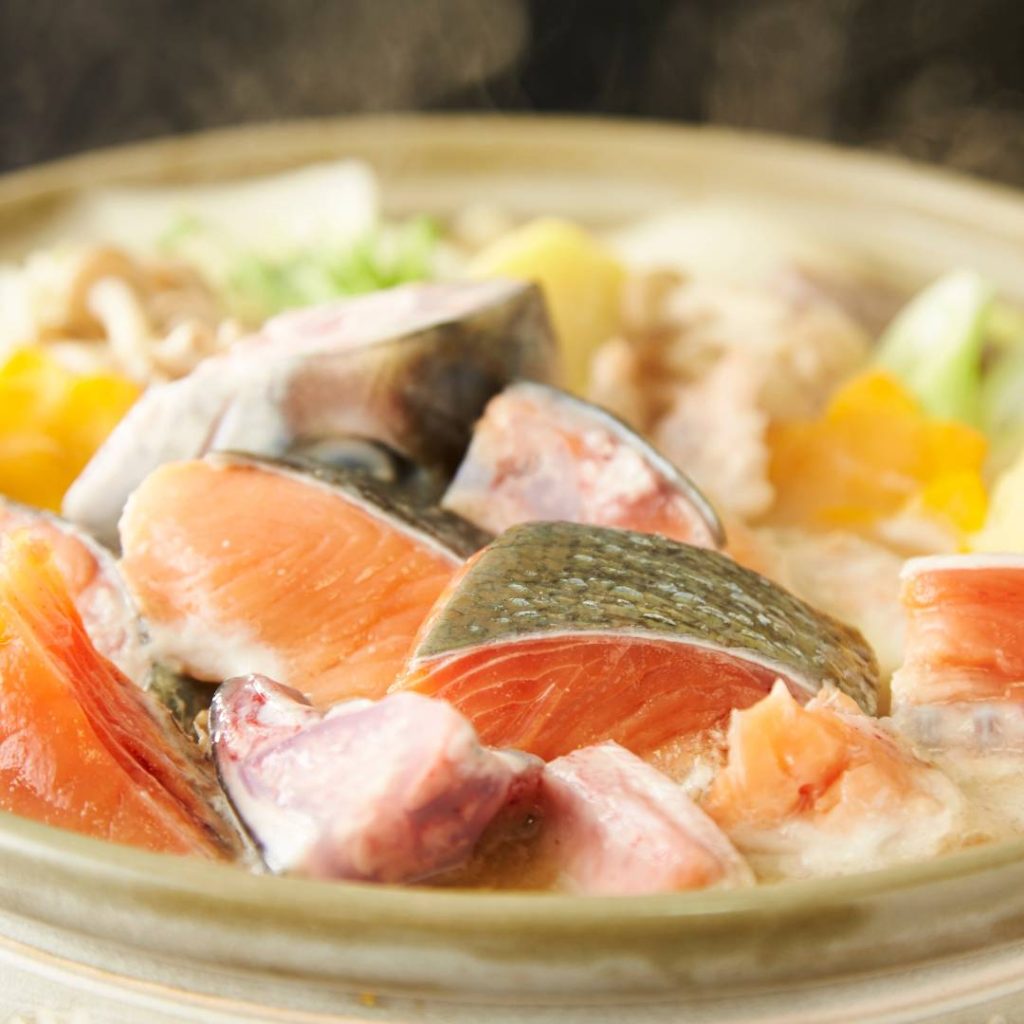
Ishikari Nabe (Salmon Hot Pot)
Hailed as one of the top 100 Japanese regional cuisines, Ishikari Nabe started as a fisherman’s meal and is now consumed in almost all households.
Being a salmon fishing center during the Meiji era, Ishikari City is the best place to savor an authentic miso-based salmon hot pot.
No one puts it together here quite like the restaurant Kindaitei.
Their take on this Hokkaido specialty uses cabbage, onions, ginger, shungiku, long onions, tsuki konnyaku (noodles), and salmon roe simmered in white miso & konbu (kelp) soup.
The cherry on top is tofu with a layer of yam, providing a subtle, refreshing flavor.

Sea Urchins (Uni)
Uni can be caught all over Japan throughout the year.
What makes native sea urchins stand out is their diet: they feed on quality kelp that gives them plenty of umami flavor and an incredibly creamy taste that melts in your mouth.
For a very unique experience, head to the Bikuni area of Shakotan.
Hidden inside the Tamura Iwataro Store is Asa Uni Bukkake Donburi, where you can choose your own portion of sea urchin, caught just the day prior.
Unfortunately, this elusive menu item only appears during the sea urchin season with less than 50 dishes sold each day.
So if your trip falls in the months of June to August, don’t miss the chance to try it. There’s nothing like fresh uni!
LeTao Cheesecake
Cold climate makes Hokkaido’s countryside ideal for dairy farming.
Rightfully so, it’s the birthplace of many iconic desserts in Japan—from cakes and cookies to rice cakes and ice creams.
Shiroi Koibito biscuit’s main rival, the cheesecake from LeTao, is one of Hokkaido’s most popular food souvenirs.
Although, I’d argue it is best eaten right there and then!
The LeTao main store is an impressive western-inspired tower where you can buy its signature cakes, baked goods, and in-store exclusives.
So even though its branches are peppered throughout Hokkaido, you’ll find something special in each of its stores in Otaru.
When you do, tell us which one is worth the drive.
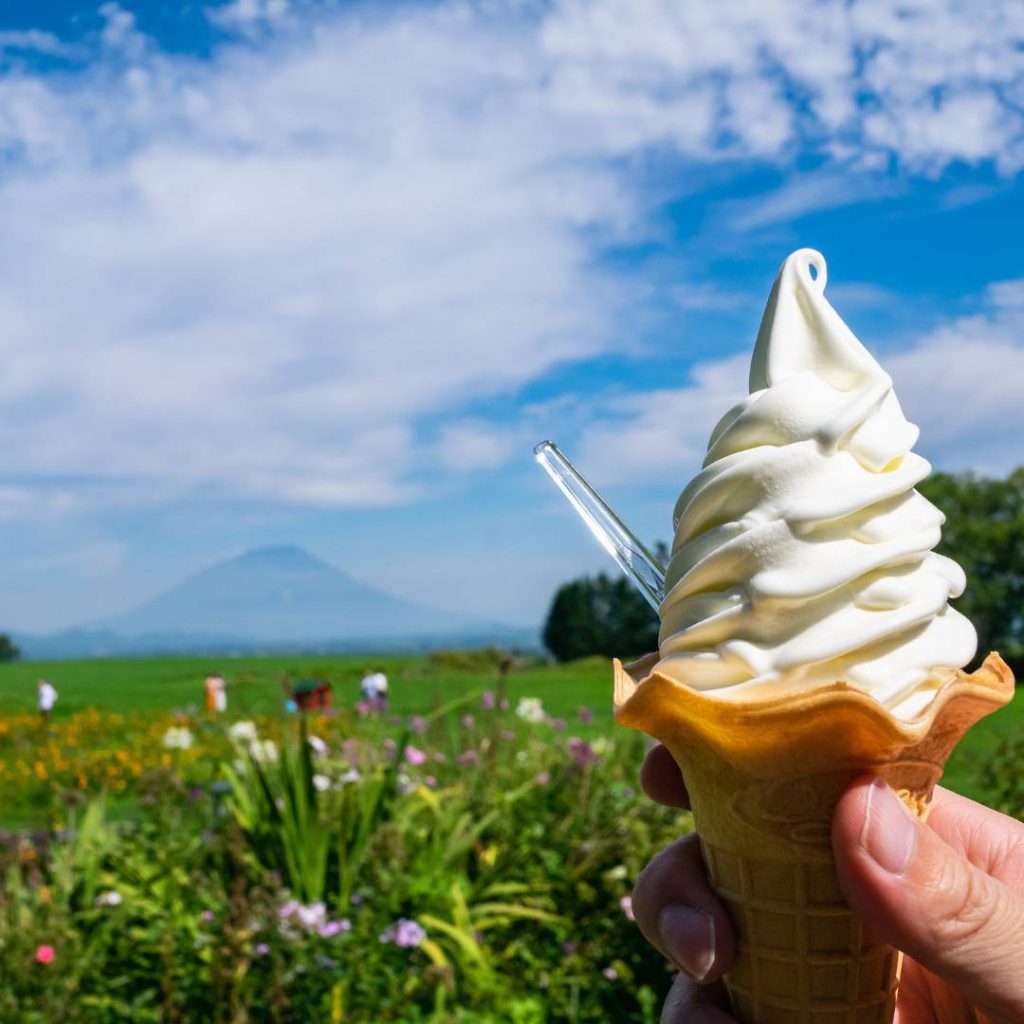
Hokkaido Soft Serve
If the above didn’t clue you in, Hokkaido is also famous for its milk, cream, and butter: the trifecta to the soft-serve ice creams churned out locally.
It’s smooth, and rich, and comes in a wide selection of flavors—both traditional and unusual, such as black squid ink, kombu, and wine.
Of course, you should also try seasonal flavors such as lavender, strawberry, and melon while you’re there!
Whichever you end up tasting first, it’ll be a delicious treat to start or end your Hokkaido food trip on a sweet note.
Conclusion
I bet I’m not the only one getting hungry at this point! Whether you’re a flexitarian or bringing your adventurous foodie friends with you, you won’t run out of treats to try in Hokkaido.
This is just scratching the surface.
Can you remember other Hokkaido specialties that your friends can’t stop talking about from their last trip? Comment down below!
For more trip-planning hacks and food guides, check out my Travel posts.


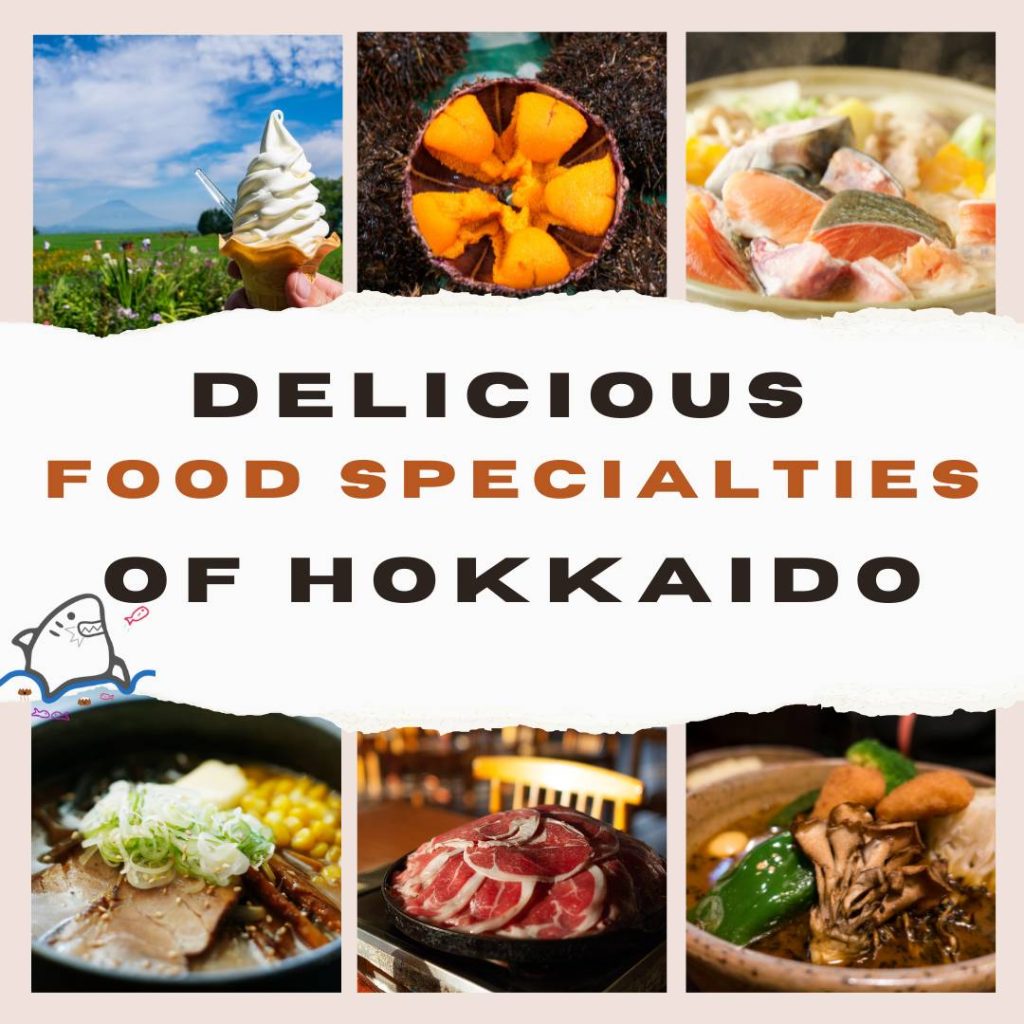




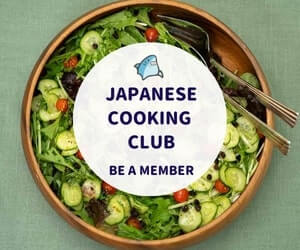



Konnichiwa! (Hello!) I'm Pat Tokuyama, a Japanese tofu cookbook author, who travels for music, food, and adventure. If you like Japanese tea, checkout some of the newestorganic japanese tea, matcha bowls and noren and more!
** Curious about the Plant Based Japanese Cooking Club? ** Learn more here!